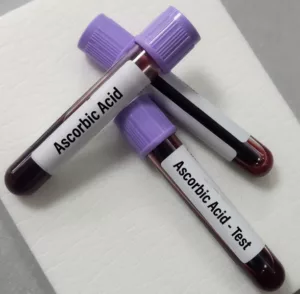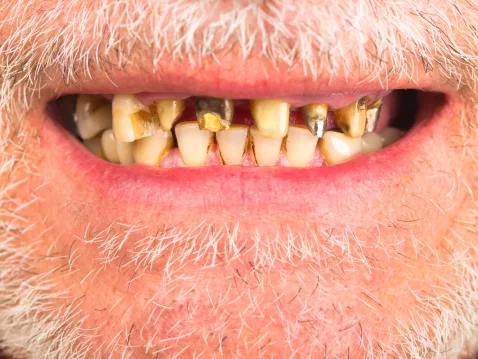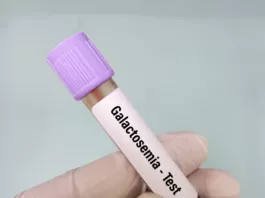Scurvy is one of the oldest documented diseases in human history and a dietary disorder that severely affects humans. Scurvy observations first appeared 3500 years ago in Egyptian medical scrolls1Magiorkinis, E., Beloukas, A., & Diamantis, A. (2011). Scurvy: past, present, and future. European Journal of internal medicine, 22(2), 147-152.. A lack of the essential nutritional element ascorbic acid, or vitamin C, causes scurvy. Due to its medication, prevention and, ultimately, cure of the disease make it now uncommon. This article summarizes scurvy, its causes, symptoms, and treatment options.
What is Scurvy?
Scurvy is a chronic or acute disease caused by a high Vitamin C deficiency (ascorbic acid). The name of the disease derives from the Latin word scorbutus, which implies rupture or lacerate. The body needs vitamin C to make collagen, an essential nutrient.
This protein is crucial in forming connective tissues like skin, blood vessels, bones, and cartilage. Without sufficient vitamin C, collagen synthesis is impaired, leading to the characteristic symptoms of scurvy 2Dresen, E., Lee, Z., Hill, A., Notz, Q., Patel, J. J., & Stoppe, C. (2022). History of scurvy and use of vitamin C in critical illness: A narrative review. Nutrition in Clinical Practice. .
What are the Symptoms of Scurvy?
Scurvy is a disease caused by a deficiency of vitamin C in the diet, which leads to or shows several symptoms. Here are the most common symptoms of scurvy:
- Anemia
- Gums that are swollen, bleeding, and may even turn purple and spongy
- Teeth that are loose and could fall out
- Having internal bleeding (skin hemorrhages). A “scurvy rash” that appears as red or blue dots on your skin is possible
- Scaly, rough skin
- Swollen legs
- Opening of new, non-healing wounds as well as already healed ones
- Hair that coils up like a corkscrew is dry and brittle 3Dresen, E., Lee, Z., Hill, A., Notz, Q., Patel, J. J., & Stoppe, C. (2022). History of scurvy and use of vitamin C in critical illness: A narrative review. Nutrition in Clinical Practice. .
Scurvy Symptoms in Babies & Children may include:
It can affect people of all ages, including babies and children. Knowing the symptoms of scurvy in babies and children is crucial. If neglected, it can result in serious problems. Some of the common symptoms of scurvy include:
- Irritability
- When they move, it hurts weakness and irritability
- Poor wound healing
- Bone pain
- Swollen and bleeding gums
- Dry mouth
- Tooth loss in severe cases
- Reduced bone formation
- Swollen limbs that bruise easily
- No appetite
- Not gaining weight
- Anemia 4MR, S. B., Yo, M. S. S., & Rentinck, M. E. (2023). Scurvy still occurs. Nederlands Tijdschrift Voor Geneeskunde, 167, D6906-D6906..
What are the Causes of Scurvy?
Scurvy was once thought only to affect older people, people experiencing poverty, and people without homes. Furthermore, it is well recognized that several disease groups (including those related to renal, neurological, psychiatric, and malabsorptive conditions) increase the risk of developing an ascorbic acid deficiency.
A severe vitamin C deficiency can cause scurvy in a diet for at least three months. Consuming insufficient fresh fruits and vegetables is one cause of this deficiency. Additionally, some of the food’s vitamin C is destroyed during cooking. Our body needs more vitamin C when certain situations are present 5Rani, L., Sharma, N., Singh, S., & Grewal, A. S. (2019). Therapeutic Potential of Vitamin C: An Overview of Various Biological Activities. INTERNATIONAL JOURNAL of PHARMACEUTICAL QUALITY ASSURANCE, 10(04), 605–612. .
Who is at Risk?
Anyone with the following conditions would be at risk for having vitamin C deficiency:
- Being a child or 65 years of age or older
- Consuming alcohol every day
- Taking illegal drugs
- Breastfeeding
- Pregnancy
- Adhering to a rigid or prescribed diet
- Having an eating problem or psychiatric disease that involves a dread of food
- Having digestive or metabolic disorders
- Neurological conditions
- Forms of inflammatory bowel disease (IBD) or living with irritable bowel syndromes (IBS), such as Crohn’s disease or ulcerative colitis
- Harboring immunological disorders
- Being around people who almost exclusively consume foods that cause chronic diarrhea
- Dehydration
- Disabilities
- Smoking
- Chemotherapy
- Radiation therapy
- Kidney failure and dialysis 6Rani, L., Sharma, N., Singh, S., & Grewal, A. S. (2019). Therapeutic Potential of Vitamin C: An Overview of Various Biological Activities. INTERNATIONAL JOURNAL of PHARMACEUTICAL QUALITY ASSURANCE, 10(04), 605–612. .
How is Scurvy Diagnosed and Treated?
Diagnosis of scurvy is typically based on clinical symptoms, dietary history, and blood tests to measure vitamin C levels.

Increasing vitamin C levels is typically an effective treatment for scurvy. It can be easily treated in mild cases by eating foods high in vitamin C. The “five servings of fruits and vegetables per day” rule will help people acquire the appropriate amount of vitamin C daily, treat mild instances, and stop new cases. However, more severe cases may need supplementary vitamin C, and supplementation might also improve recovery 7Trapani, S., Rubino, C., Indolfi, G., & Lionetti, P. (2022). A Narrative Review on Pediatric Scurvy: The Last Twenty Years. Nutrients, 14(3), 684. .
Does Food Help Treat Scurvy?
Yes, certain foods can help treat scurvy, which is a condition caused by a deficiency in vitamin C. Vitamin C is necessary for the synthesis of collagen, which is an important structural component of connective tissue throughout the body. Without adequate vitamin C, the body cannot produce collagen, and this can lead to symptoms of scurvy, including weakness, fatigue, gum disease, and skin rash. Foods high in vitamin C can help treat scurvy, like fresh fruits and vegetables.
What are the Sources of Vitamin C?
Vitamin C, also known as ascorbic acid, is a water-soluble vitamin that cannot be produced by the human body and must be obtained from diet or supplements. Some common sources of vitamin C include:

Citrus fruits, such as oranges, grapefruits, lemons, limes, berries, strawberries, raspberries, blackberries, blueberries, kiwi, papaya, pineapple, mango tomatoes, bell peppers, and chili peppers, kale, spinach, broccoli, cauliflower, brussels sprouts, melons, orange juice, and grapefruit juice. And supplements in the form of tablets, capsules, or powders.
It’s important to note that cooking or processing foods can reduce their vitamin C content. So it’s best to eat raw or lightly cooked vitamin C-rich foods to obtain the maximum benefit.
Can Scurvy Cause Death?
Yes, scurvy can be fatal if left untreated. While it is rare in developed countries, it is important to note that treatment with vitamin C supplements and nutritional changes in food can result in a full recovery. Additionally, incorporating healthy habits such as exercise and reducing stress levels can aid recovery. Furthermore, early detection of the condition can significantly increase the chances of successful treatment.
Conclusion
Scurvy is a disease that can be treated and avoided, highlighting the value of a healthy diet and an appropriate intake of nutrients like vitamin C. It can be effectively prevented and managed with the help of awareness of the risk factors and early detection through clinical evaluation and blood tests.
Refrences
- 1Magiorkinis, E., Beloukas, A., & Diamantis, A. (2011). Scurvy: past, present, and future. European Journal of internal medicine, 22(2), 147-152.
- 2Dresen, E., Lee, Z., Hill, A., Notz, Q., Patel, J. J., & Stoppe, C. (2022). History of scurvy and use of vitamin C in critical illness: A narrative review. Nutrition in Clinical Practice.
- 3Dresen, E., Lee, Z., Hill, A., Notz, Q., Patel, J. J., & Stoppe, C. (2022). History of scurvy and use of vitamin C in critical illness: A narrative review. Nutrition in Clinical Practice.
- 4MR, S. B., Yo, M. S. S., & Rentinck, M. E. (2023). Scurvy still occurs. Nederlands Tijdschrift Voor Geneeskunde, 167, D6906-D6906.
- 5Rani, L., Sharma, N., Singh, S., & Grewal, A. S. (2019). Therapeutic Potential of Vitamin C: An Overview of Various Biological Activities. INTERNATIONAL JOURNAL of PHARMACEUTICAL QUALITY ASSURANCE, 10(04), 605–612.
- 6Rani, L., Sharma, N., Singh, S., & Grewal, A. S. (2019). Therapeutic Potential of Vitamin C: An Overview of Various Biological Activities. INTERNATIONAL JOURNAL of PHARMACEUTICAL QUALITY ASSURANCE, 10(04), 605–612.
- 7Trapani, S., Rubino, C., Indolfi, G., & Lionetti, P. (2022). A Narrative Review on Pediatric Scurvy: The Last Twenty Years. Nutrients, 14(3), 684.





